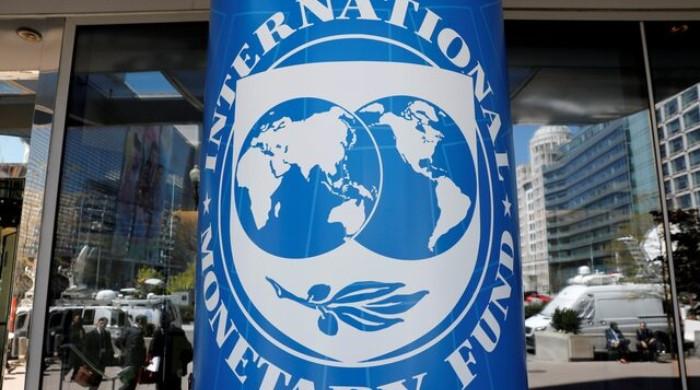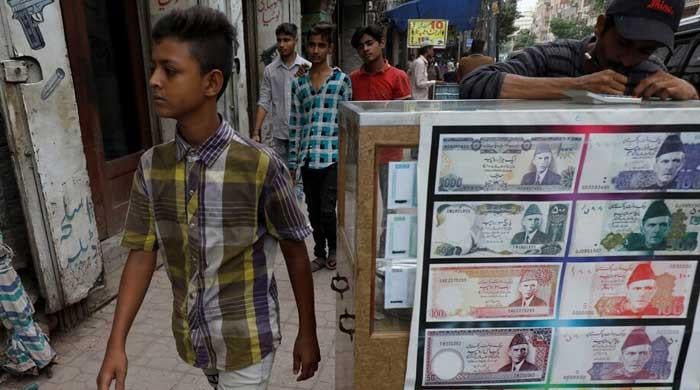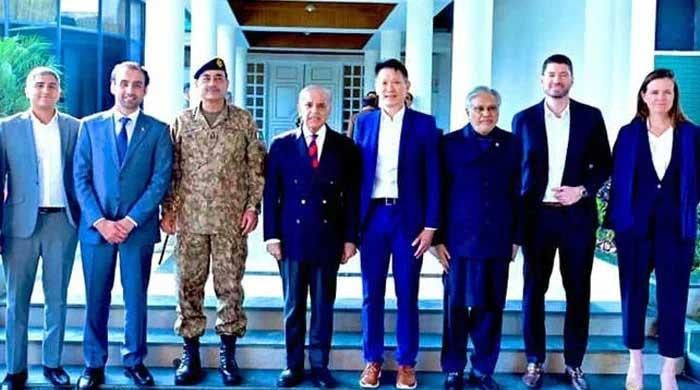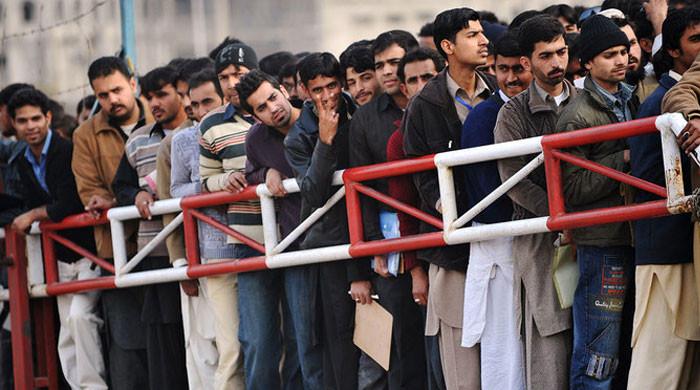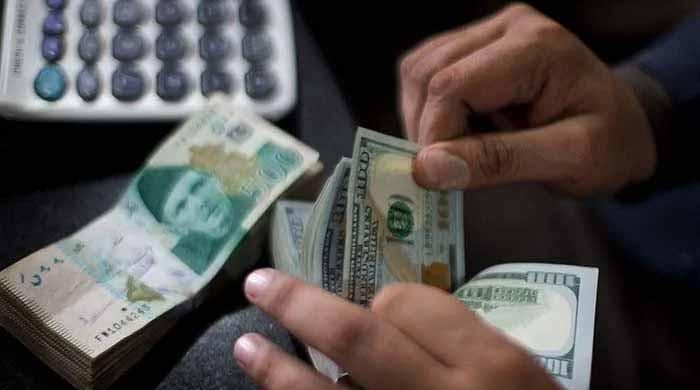What does it mean for Sindh, Punjab to be sister states of New York?
Question is what qualifies two of four provinces of Pakistan to enter into sister-states relationship?
November 29, 2023
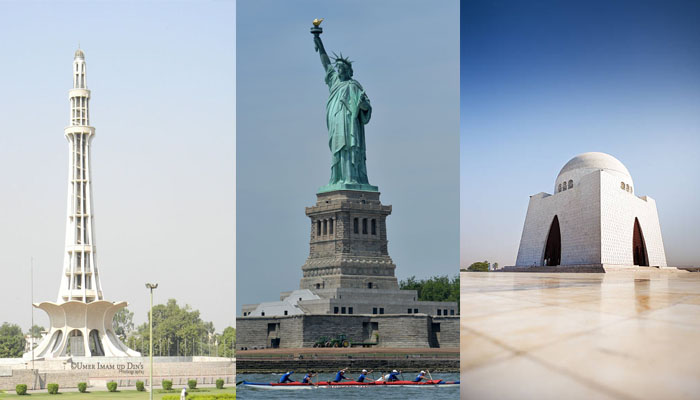
Phil Ramos, Deputy Speaker of the State Assembly, is all geared up to declare Punjab and Sindh as New York’s sister states. Ramos, heading a delegation of the American Pakistani Public Affairs Committee (APPAC) is currently in Pakistan holding meetings with top government officials.
The question is what qualifies two of the four provinces of Pakistan to enter into this relationship?
First, let’s take an in-depth look at Punjab — the land of five rivers.
Punjab is no doubt, the most populated province of Pakistan. According to the 2023 census, it is home to almost 130 million (127,688,922) people.
It is already a sister state of California — the US state with the highest population (almost 39.3 million). Binding it with the same relationship to the fourth populated state, New York (19.68 million), will further foster people-to-people contacts.
Additionally, it will facilitate a hundred thousand Pakistanis living in the Empire State, who mostly hail either from Sindh or Punjab.
To many extents, this move will be advantageous to the Indian American community as well.
According to the Migration Policy Institute, there are 2.7 million Indian immigrants living across the United States. New York is their fourth favoured destination after California, Texas and New Jersey.
In 1947, the Britishers partitioned Punjab into two parts. The Hindus and Sikhs flocked to the present-day Indian side of Punjab while most Muslims of that area migrated to Pakistan. Mass migration was also witnessed from Sindh and other provinces that constituted Pakistan or India.
A number of Hindu worship places in Pakistan still reflect their former glory. These include the Hinglaj Temple in Balochistan, the Katas Raj Temple of Lord Shiva in Punjab, the Amarkot Shiv Mandir, the Swami Narayan Temple and the 1500-year-old Punchmukhi Hanuman Temple in Sindh.
Moreover, most of the sacred religious places of the Sikh community also exist in Pakistan.
From all over the world, the Sikhs make annual pilgrimages to different cities in Pakistan including Nankana Sahib in Punjab, the birthplace of Guru Nanak (the founder of Sikhism).
Hence, declaring New York and Punjab (Pakistani) as sister states can become a source of religious tourism and bring the Indian and Pakistani communities closer.
Both provinces have historic values as well.
Sindh is the birthplace of Quaid-e-Azam Muhammad Ali Jinnah, the founder of Pakistan. And Punjab, the birthplace of Allama Muhammad Iqbal, the national poet.
Sindh is distinct for its history as it boasts to have Mohenjo-daro, an archaeological site designated as World Heritage by UNESCO. This ancient site, 80 kilometres southwest of Sukkur, has the remnants of Indus Valley civilisation that flourished c.2500-1700 BCE.
On the other hand, Punjab is proud of having Harappa, another archaeological site known for its ancient civilisation. This historic town is situated almost 160 kilometres Southwest of Lahore. A lot of parallels are drawn between Mohenjo-daro and Harappa. Hence, both attract tourists from around the world who want to have a glimpse of history through these rare windows.
Punjab is also the seat of the Gandhara Buddhist civilization that had Taxila as its capital.
The rare artefacts of those different eras are well kept in a number of museums in both Sindh and Punjab. Thus, sister-state ties may help better showcase the history of Pakistan in New York and American history in both Punjab and Sindh.
Additionally, these two provinces are known for their rich art and vibrant culture.
Paintings of world-acclaimed artists like Sadequain, Ahmed Parvez, Ismail Guljee, Abdur Rahman Chughtai, Allah Bux, Ali Imam and many others draw interest from global art lovers.
Musicians like Rahat Fateh Ali Khan, Atif Aslam, Sajjad Ali, Ali Zafar and Abida Parveen equally attract large audiences. Even young artist like Kaifi Khalil has transcended boundaries with his songs ‘Kana Yari’ and ‘Kahani Suno’, which has 370 million views on YouTube.
Bhangra, a traditional Punjabi style of music and dance, is so popular that it was performed in the White House when the then president Barack Obama welcomed Indian Prime Minister Manmohan Singh.
Therefore, it is fair to say that the sister-state relationship will improve the soft image of Pakistan.
Plus, this step will also supplement the efforts of Pakistani American Shahid Khan who serves as the Adviser to US President on Arts.
Punjabi and Sindhi cuisine is also getting popular across the USA. Be it Biryani, Butter Chicken, Chole (chickpea curry), Dal Makhani, Sarson Ka Saag, Paratha, Malali Lassi, Mango Shake, Gulab Jaman, or Gajjar Ka Halva, these are some of the items that are liked by the Americans as well.
One can also find Americans even munching on Siri Paya and many of the above-listed delicacies in hundreds of Pakistani restaurants across New York and other states. Little doubt that this food diplomacy is winning hearts.
In addition to that, sister-state relationships will benefit in many other ways as well.
Punjab boasts some of the prestigious educational institutes like Aitchison College, Lahore University of Management Science, King Edward Medical University, and University of the Punjab.
Sindh is home to a number of prestigious institutions like Karachi Grammar School, Institute of Business Administration, NED, DMC and Agha Khan Medical College to name a few.
A number of overseas Pakistanis are sending their kids to these institutes as they offer comparatively less expensive education. At the same time, it gives them a chance to experience the ancestral culture and traditions.
Once a sister-state relationship is sealed, Pakistani institutes will be able to have better collaboration and exchange programmes. Moreover, this youth will later serve as the bridge between the two countries and erase misperceptions about the United States of America in Pakistan.
In the last few years, Pakistan has also witnessed reverse health migration. Overseas Pakistanis living in the USA, UK, Europe and Canada are visiting Pakistan for surgeries and dental treatment. This is due to the fact that not only private but also government hospitals are providing the best possible treatments for different ailments.
Facilities provided by Doctors Hospital, Hameed Latif Hospital, National Hospital, Itefaq Hospital, Sharif Medical City Hospital, Shaukat Khanum Memorial Cancer Hospital & Research Centre have established themselves as some of the best private health facilities.
At the same time, government-run Punjab Institute of Cardiology, Mayo, Gangaram and Jinnah Hospitals in Lahore have their repute for providing almost free treatment.
The same is true for Sindh. Here, hospitals like Aga Khan, Indus, South City, National Institute of Cardiovascular Diseases and Sindh Institute of Urology and Transplantation etc are known for their state-of-the-art medical treatment.
Sister-state relationships will become a source of improvement for these facilities and lower the burden on hospitals across the USA.
The new relationship has the potential to open more doors to the student community as well.
Already, a 16% increase has been witnessed in the number of students from Pakistan pursuing studies in the United States. According to a report, ‘during 2022-2023, there were 10,164 Pakistani students, compared to 8,772 in the previous year’.
Some of these students are sent on youth exchange programmes, availed USAID or financed their own education.
People-to-people contacts already exist between these regions.
A number of social, cultural, educational, medical and other organisations have their chapters in NYC and other cities across the USA.
Even the American Pakistani Public Affairs Committee spearheading the sister state initiative was established in New York. Most of its board members either hail from Punjab or Sindh.
Last but not least, these ties will boost trade and investment.
According to Trading Economics, Pakistan's exports to the United States stood at $6.08 billion during 2021. Cotton, textile, leather, carpets, medical apparatus, furniture, sports items and cereals were some of the top items exported either from Punjab or Sindh.
Punjab is the food basket of Pakistan. Agriculture accounts for 22.9% of the GDP and 37.4% of employment generation. It produces wheat, rice, cotton, sugarcane, maize, pulses, vegetables, fruits, dairy items and many more. According to the government of Punjab, ‘agro-based products fetch 80% of the country’s total earnings.’
Sindh also produces most of these items. Moreover, Karachi Fish Harbour handles almost 90% of the catch and 95% of this seafood is served on tables around the world.
Traders of Punjab and Sindh have high hopes that sister-state relationships will not only help boost exports to New York but other states as well. At the same time, New York-based food chains and other multinational companies will find more opportunities in Pakistan.




